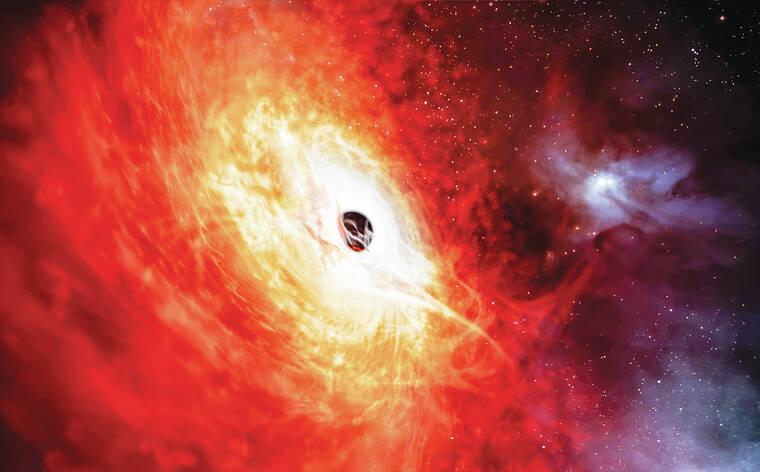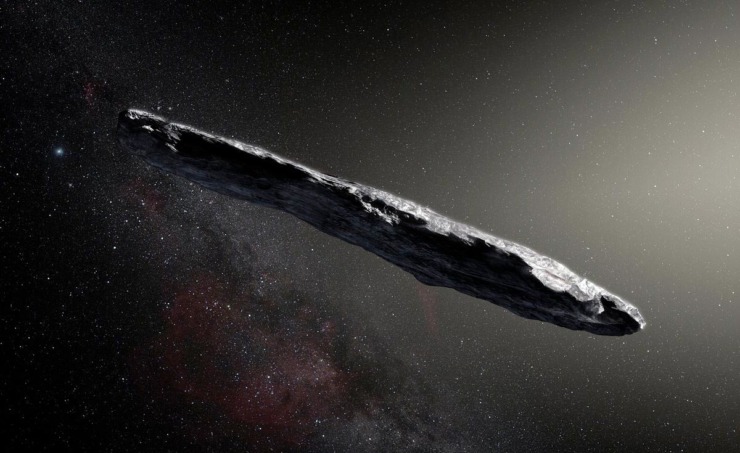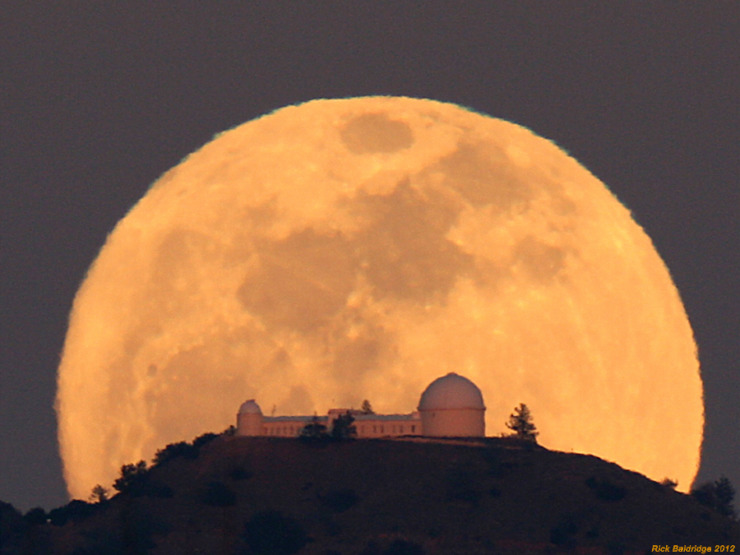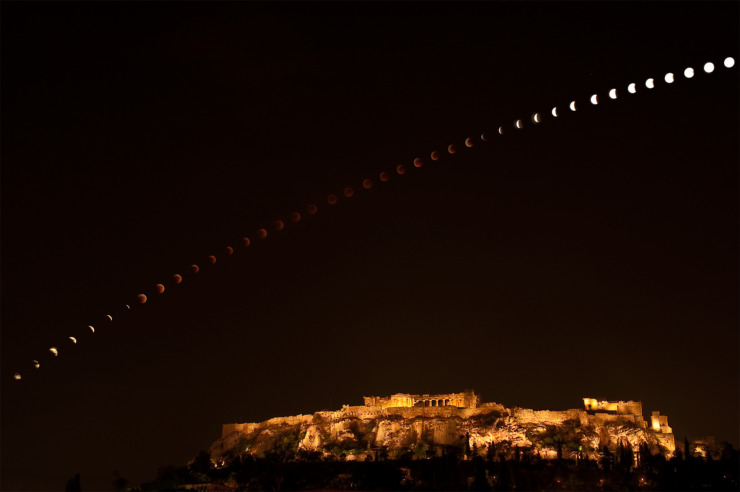You think you ate too much? No matter how stuffed you were after Thanksgiving (or another celebratory meal), it’s nothing compared to Quasar J0529-4351, which astronomers observed earlier this year to be consuming the mass of our entire Sun EACH and every day! They called it “the fastest-eating object in the universe.”
We now know that at the centers of most large galaxies, where material is very crowded, very large black holes can form and continue to feast. Our own Milky Way Galaxy has a black hole that has already consumed the equivalent of 4 million Suns (a discovery that won the 2020 Nobel Prize!) Other galaxies, with bigger central concentrations of stars and raw material, can have bigger black holes, some containing billions of suns’ worth of material.
Black holes are places where material, usually from a dying star, collapses and becomes so “squozen” (compressed) that its gravity exceeds the limits of normal behavior. Einstein and others showed that in such cases, gravity becomes so strong that nothing, not even light, can escape. So if you try to “see” such a collapsed object, its color will be completely black. Thinking about that, you might reasonably ask, so how do astronomers find one of these black holes?
The answer is, we can only see them from their messy eating! As “food” from its cosmic neighborhood is pulled in and falls into the gravity well of such an object, it swirls around the outer limit of the black hole like a great whirlpool. That whirlpool, before it reaches the black hole, is a chaotic, fast-moving place, that glows with many different kinds of radiation. Astronomers call this region of doomed material the black hole’s “accretion disk.” It is the glow of this disk that betrays the presence of the “super-massive” black hole to astronomers during its meal.
The glowing region is still tiny compared to entire galaxy of stars. So from far away, this glowing region just looks like a bright star. In fact, the term “quasar” originally came from “quasi-stellar object” — something that looked like a star from far away, but was actually the core of an entire galaxy. The quasar in our example was actually mistaken for a star for several decades, before better instruments revealed it to be the hungry core of a distant galaxy.
How distant? Carefully study shows that our overfed black hole is 12 billion light-years away. That means the light, and other radiation, we see from it tonight left the object 12 billion years ago, only about 2 billion years after the Big Bang. This fits in with the general idea that astronomers have been developing that hungry black holes had more stray food around to eat long ago, and thus their accretion disks glowed brighter. Today, a lot of that food is gone, the central black holes have less to eat, and their accretion disks glow with less energy as a result. The early universe may have been an “all-you-can-eat banquet” for the black holes that got started on their meals early.
If you angry at yourself for overeating this holiday weekend, perhaps that can put things in perspective!




